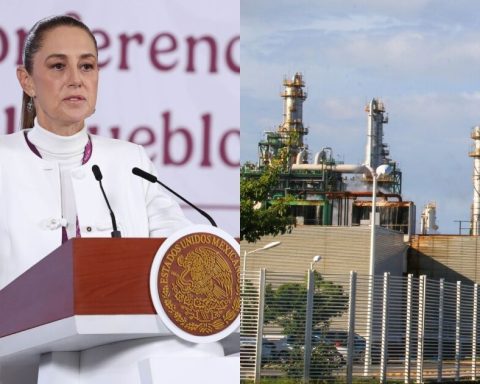The Association of Professional Architects, Designers and Urban Planners of Uruguay (Apaduu) issued a statement in response to the alarm situation raised yesterday by a group of architects from the Society of Architects of Uruguay. The latter warned in a technical report on the risks of producing concrete using the water with high levels of salt and chlorides that supplies SBI since the water crisis broke out.
By the way, Appadu, in a letter signed by its General Secretary, Fiorella Pesce, affirms—after consulting sources with long experience in civil engineering and construction—, that “the chloride in the water has not yet reached the limit that could harm the structure”although it makes the caveat that it does accelerate the corrosion of iron and “produces efflorescence” (irregular-looking white spots that appear due to humidity).
The preliminary conclusion of this Association is that according to the structural calculation standards used in Uruguay (which refer to the Spanish standard and to Standard Unit 1050:2005) it is that “according to the characteristics of the water to date, You can continue with the elaboration of structural concrete, both ready-mixed and on site”.
Besides, the Apaduu emphasizes that the majority of concrete production plants do not use OSE waterbut from their own wells and that in the cases of concrete production on site “the quantities are within the limits” covered by the aforementioned regulations.
Given the proposal made by a group of architects on the use of water for concrete, our analysis of the subject goes on.
The water complies with the Standards for making concrete @ObserverUY @LuisLacallePou pic.twitter.com/RmEsJiWTEi— APADUU (@ apaduu10) July 4, 2023
According to the standards mentioned by the Association, the chloride limits are set at 3 grams, according to the Spanish structural code and according to UNE standards, they must be less than or equal to one gram per liter of prestressed concrete and less than or equal to two grams per liter of concrete. molded. The limit set by OSE is 740 milligrams per liter. “Daily values are still below what is indicated in the previous standards,” the report says.
As a result of this, the report concludes that water “for the moment is not an impediment for the production of concrete”, in the case of production on site, while it is closer in the case of pre- or post-stressed concrete. “But in these cases it must be taken into account that pre-mixed concrete is used”, in which the factories use their own water.
Finally, they advise verifying the origin of the water with the ready-mix concrete suppliers.














